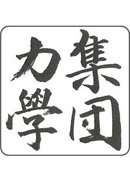The present article introduces a dialogue between two authors, one of whom is the first author of the study, “Relief activities of a Chinese non-governmental organization for the victims of the Sichuan huge earthquake in 2008" (Chen & Sugiman, 2010).As first author of the present article, I posed four questions about the NGO in the study, Disaster Preparedness Center (DPC), to Ms Chen, the second author of this article.Since that time, we have exchanged discussions via e-mail for about 3 months.The first set of questions was also forwarded to the DPC, and we received a response from one of its staff members.
First, we discussed the relationship between the DPC and the Chinese government.We confirmed that the DPC had been active with the resources of the national and local governments based on its established relationship with them.We concluded that Chinese NGOs face difficulty in further development due to huge gap in resources and power with Chinese governments, while Western NGOs claiming to stand for democracy also had potential problems in purifying their advocacy.
Second, the DPC's mode of operation was the issue of our discussion, especially on its rationale for withdrawal from disaster deployment.We understood that once active initiative and leadership were brought out in a community, the DPC allowed itself to withdraw.However, we also pointed out that the rationale may be interpreted as harsh by NGO members.
Third, we discussed DPC's perception of survivors.Inevitably, some survivors are left out of relief efforts.The DPC, in its mission, takes care of them, provided that there are sufficient resources available.We argued that, although the scarcity of resources was a fact of grim reality, only NGOs are available to serve the survivors who are excluded by other relief efforts; otherwise, the raison d'etre of the NGO would vanish.
Fourth, the current situation and future perspectives of Chinese NGOs were discussed.It was our mutual hope that they contribute to the progress of Chinese society and continue efforts to overcome current difficulties without being distracted by superficial criticisms by the media.
View full abstract
